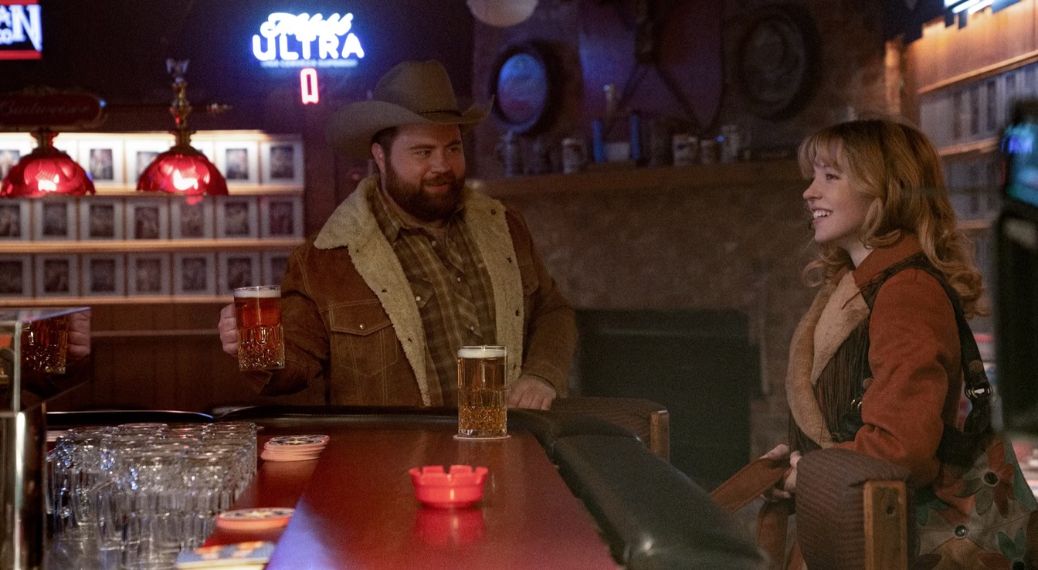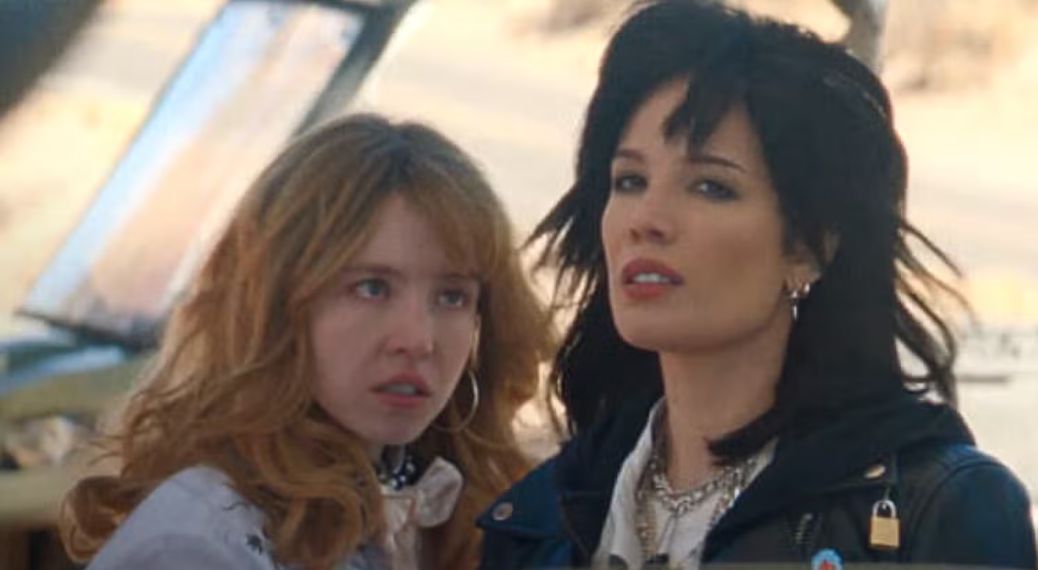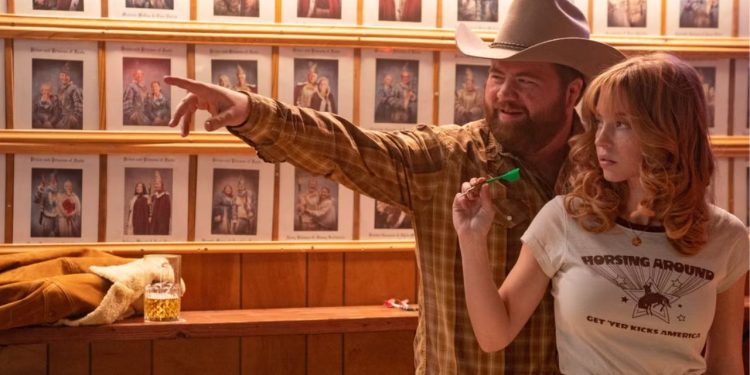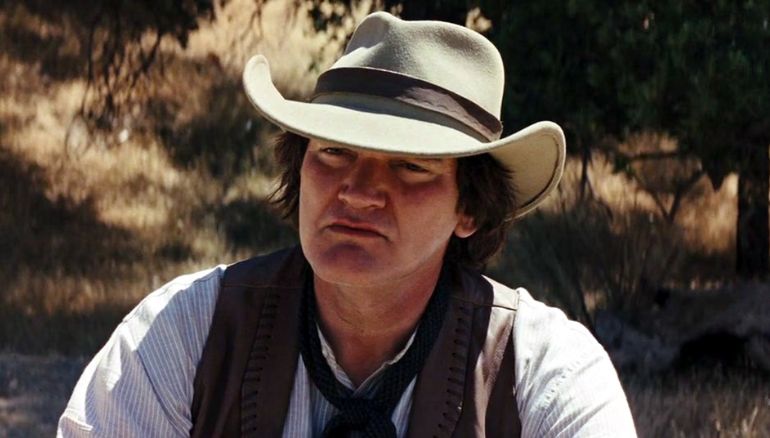What's Inside?
- Sydney Sweeney delivers a magnetic yet understated performance as Penny Jo, a shy waitress chasing dreams amid a dangerous artifact hunt.
- Americana blends Western action with cultural critique, highlighting Native American heritage while balancing dark humor and stylized violence.
- Despite pacing issues in its finale, the film charms with standout performances, sharp dialogue, and a Coen-Tarantino-inspired style.
Sydney Sweeney’s star power shows no sign of dimming. Whether it’s the long-awaited return of Euphoria for Season 3, her recent turn in Echo Valley with Ridley Scott as producer, or her viral American Eagle campaign, the Emmy-nominated actress has an unshakable grip on pop culture. Now, she rides into the dusty, dangerous terrain of Americana, a modern-day Western crime thriller making its theatrical debut on August 15 after a festival run that left critics intrigued and divided in equal measure.
Sydney Sweeney’s Americana: A Stylish Western with a Dangerous Prize at Its Center

Americana, which premiered at SXSW in 2023 and currently boasts an 82% critic score on Rotten Tomatoes, unfolds in a small South Dakota town where greed, ambition, and desperation collide over an artifact with blood-soaked history. The film’s MacGuffin is the Lakota ghost shirt – a sacred 19th-century garment once believed to shield its wearer from settlers’ bullets. In writer-director Tony Tost’s hands, the shirt becomes a symbol of cultural reverence, exploitation, and the uneasy intersection of the two.
The story kicks off when the artifact slips into the black market. Penny Jo (Sweeney), a shy, stuttering waitress with dreams of becoming a Nashville singer, crosses paths with Lefty Ledbetter (Paul Walter Hauser), a lovelorn war veteran who’s quick to propose marriage after only a handful of dates. The two hatch a plan to steal the ghost shirt for the money it could bring – and for Penny Jo, the ticket to a new life. Their scheme, however, is far from the only one in play.
Also in pursuit is Dillon, hired by oily antiquities dealer Roy Lee Dean (Simon Rex) to swipe the shirt from a smug private collector. Meanwhile, Mandy – a desperate woman fleeing her past – uses brutal means to get her hands on it, leading the chase into even bloodier territory. Each thread intertwines, with characters colliding in ways that feel alternately darkly comic and sharply violent.
Charm, Commentary, and Chaos in Equal Measure

While Americana delivers its fair share of shootouts and standoffs to satisfy genre traditionalists, Tost aims for something broader – a pointed critique of how modern white society often misinterprets or exploits Native American heritage. Nowhere is this sharper than in scenes with Ghost Eye (Zahn McClarnon), leader of a militant Indigenous group inspired by the Black Panthers. When one well-meaning character claims to be the reincarnation of Sitting Bull, Ghost Eye delivers the cutting reply: “Kid, this ain’t exactly the golden age of cultural appropriation.”
Stylistically, the film wears its influences openly. The non-linear storytelling, quirky dialogue, and offbeat humor nod to the Coen brothers, while its bursts of stylized violence recall Quentin Tarantino. One standout moment – a diner conversation about a Cobb salad with vinaigrette just before a crime is planned – could have been lifted straight from Tarantino’s playbook. Yet despite the familiar beats, Tost injects enough originality to keep the film from feeling like mere imitation.
Still, the movie isn’t without its flaws. After a compelling middle act, the narrative stumbles in its final stretch. The climax unfolds at the Wyoming compound of Mandy’s estranged father – a revelation both bizarre and strangely fitting for Tost’s off-kilter tone – before devolving into two consecutive shootout sequences that overstay their welcome. At over two hours, the pacing in this portion risks diluting the film’s sharper earlier energy.
But even when Americana loses narrative focus, its performances keep the engine running. Sydney Sweeney leans into Penny Jo’s awkwardness and guarded charm, her cascade of curly red hair framing a performance that is understated yet magnetic. She and Hauser’s gentle chemistry softens the film’s harder edges, while Rex’s sleazeball antiquities dealer and McClarnon’s quietly commanding Ghost Eye give the ensemble the texture it needs.
In the end, Americana is a paradox – fresh and derivative, stylish yet uneven. It captures the sweeping moral gray areas of the Western genre while offering a rare mainstream acknowledgment of Native American perspectives, without tipping into preachiness. The South Dakota prairies may be vast, but here they’re crowded with greed, bullets, and just enough humanity to make the journey worth taking – even if the storytelling gold remains half-buried.
Americana, from Lionsgate, opens in theaters on August 15














